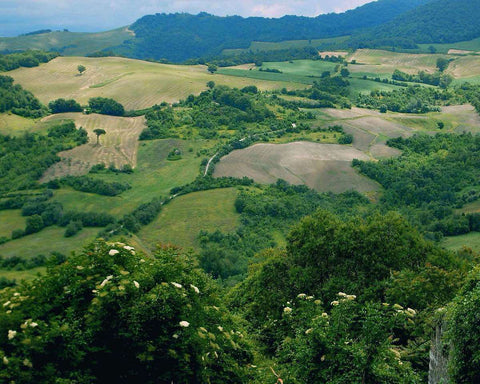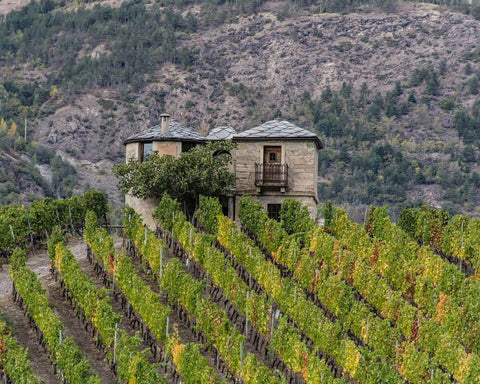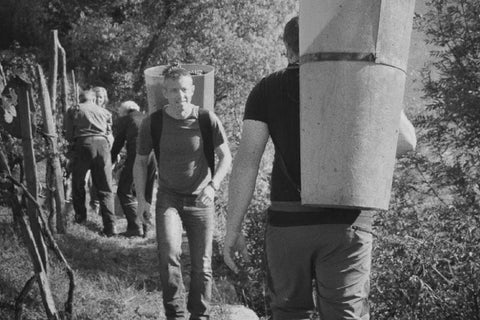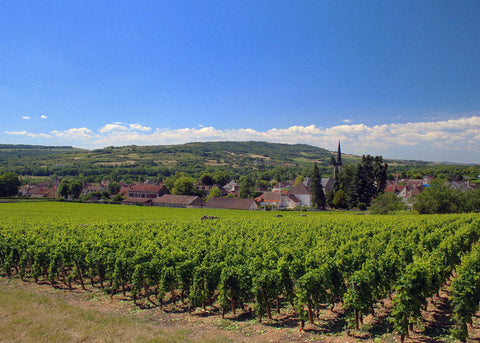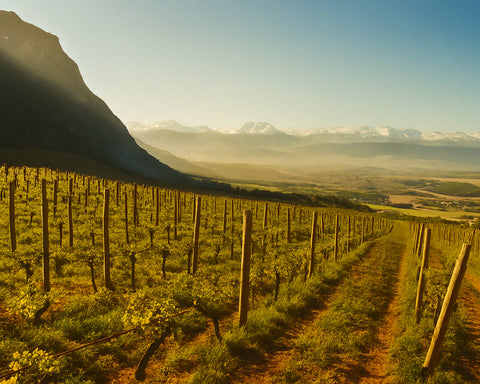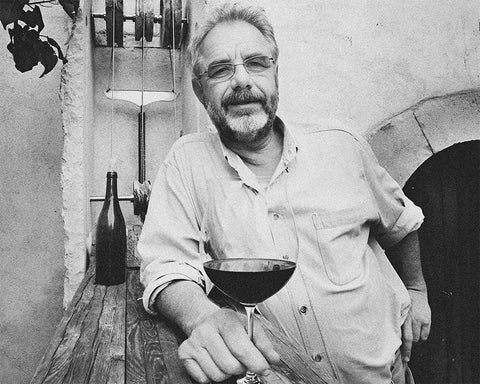Molise, Italy's second smallest region, is a hidden gem with a rich cultural and natural heritage. Nestled between the Apennine Mountains and the Adriatic Sea, this southeastern Italian region is known for its unspoiled landscapes, ancient traditions, and vibrant culinary scene. Over the centuries, Molise has maintained its rustic charm and authenticity
The products and cuisine from Molise are not just sustenance; they encapsulate the region's rich history, its commitment to quality, and its passionate pursuit of culinary excellence, especially evident in its renowned pasta dishes and unique cheeses.
Table of Contents
History of Molise
Molise, bordered by Abruzzo to the north and Puglia to the south, has always been a region of strategic significance, geopolitically and culturally. Its history is a rich tapestry of cultures, from the ancient Samnites and Romans to the Lombards, who recognized the region's potential for agricultural production.
Molise underwent numerous transformations over the centuries, from being a part of the Kingdom of Naples to becoming an independent region in 1963.
Campobasso, the regional capital, has been a political and cultural activity center. Throughout these historical shifts, one constant remained: Molise's unwavering commitment to preserving its traditions and producing exceptional local products, a tradition passed down through generations.
The history of agriculture in Molise stretches back to the ancient Samnites, who cultivated the land long before the arrival of the Romans. Archaeological evidence suggests that agriculture was well-established in Molise when the Romans arrived in the 3rd century BCE.
The Romans, known for their engineering prowess, recognized the potential of Molise's fertile lands and further developed agriculture in the region. They introduced advanced techniques and expanded the farmlands, laying the foundation for Molise's future as a major agricultural area.
Following the fall of the Roman Empire, agriculture in Molise, as in much of Europe, was preserved and advanced by monastic orders. Monasteries became centers of agricultural knowledge, and monks meticulously maintained farmlands and documented their farming practices. The Benedictine and Cistercian orders, in particular, played a significant role in promoting high-quality agriculture.
During the medieval period, the nobility also began recognizing the value of Molise's lands. They established estates and promoted the cultivation of various crops, contributing to the region's reputation for producing fine agricultural products. The Counts of Molise were instrumental in promoting and protecting the region's agricultural interests.
The Renaissance marked a significant turning point in Molise's agricultural history. During this time, the cultivation of wheat and the production of pasta began to gain prominence. Wheat thrived in Molise's fertile soils, producing grains with remarkable quality and flavor.
One of the most notable developments during this period was the emergence of traditional pasta-making techniques.
Molise is renowned for its artisanal pasta, celebrated for its texture, flavor, and craftsmanship. The origins of these techniques can be traced back to the early 19th century when local families refined the pasta-making processes, transforming it into the high-quality product we know today.
The 19th century was a period of innovation and challenges for Molise's agricultural industry. On the one hand, the region saw significant advancements in farming techniques. The influence of scientific approaches to agriculture improved the quality and consistency of Molise's products.
However, this period was also marked by the devastating impact of phylloxera, a vine-killing pest that ravaged European vineyards. Molise was not spared, and many vineyards were destroyed. The crisis prompted a replanting effort, often using American rootstocks resistant to phylloxera, which eventually allowed the region to recover and continue its winemaking traditions.
The early 20th century was challenging for Molise, as it was for many European regions. The two World Wars and the economic turmoil that followed significantly impacted agriculture. However, the resilience of Molise's farmers shone through as they worked to rebuild and rejuvenate their farmlands.
The mid-20th century began a renaissance for Molise's agricultural products. Farmers began to focus on quality over quantity, adopting modern techniques while respecting traditional methods. This period saw the rise of notable agricultural families and estates, who played pivotal roles in elevating the status of Molise's products on the global stage.
Molise has firmly established itself as one of Italy's premier agricultural regions in recent decades. The region's commitment to quality, combined with its unique terroir, has earned it a place among the elite agricultural areas of the world.
The appellation system, introduced in the 1960s, further cemented Molise's reputation. Creating DOC (Denominazione di Origine Controllata) and DOP (Denominazione di Origine Protetta) classifications helped protect and promote the region's products. Molise's traditional pasta and cheeses were among the first to receive DOP status, underscoring their significance.
Terroir of Molise
Molise's terroir is characterized by its unique climate, topography, and soil interplay. The region enjoys a Mediterranean climate, with mild winters and warm summers, moderated by the Adriatic Sea.
The mountainous terrain, particularly in areas like Matese and Mainarde, provides an optimal setting for vineyards and farmlands, ensuring ample sunlight and drainage. The soil composition varies, ranging from sandy and clayey in coastal areas to more calcareous soils in the mountains.
This diverse terroir lends itself to the cultivation of a myriad of crops and grape varieties, each expressing a unique facet of the region's multifaceted character.
The Geology of Molise
Molise's landscape predominantly comprises rolling hills and mountains, with elevations ranging from sea level to over 2,000 meters above sea level. The region is divided into several sub-regions, each with unique geological characteristics. The primary agricultural areas include Campobasso, Isernia, and Termoli, each contributing distinct terroir profiles.
- Campobasso: Known for its fertile plains, it provides excellent conditions for growing wheat, olives, and grapes. The region is famed for its traditional pasta and olive oil, which thrive in the well-drained soils and benefit from the area's significant diurnal temperature variation.
- Isernia: Characterized by mountainous terrain and calcareous soils, Isernia is slightly cooler than Campobasso. These conditions are ideal for the production of cheeses and wines.
- Termoli: This coastal area features sandy and clayey soils. Termoli is well-known for its seafood and wines, producing robust and flavorful products.
The region's geological diversity ensures that each crop and grape variety can match its optimal soil type, enhancing the products' expression and complexity.
Climate and Its Influence
Molise's climate is Mediterranean, characterized by hot summers and mild winters, with significant temperature variation between day and night. This diurnal range is crucial for crop ripening, allowing the development of sugars during the day and preserving acidity at night. The region's microclimates, influenced by the surrounding mountains and the Adriatic Sea, further contribute to the distinctiveness of Molise's products.
The Grapes of Molise
Molise has several indigenous grape varieties, each adapted to the region's unique terroir. The most notable are Montepulciano, Sangiovese, and Trebbiano.
Red Grape Varietals
- Montepulciano : The cornerstone of Molise's most celebrated wines, such as Tintilia.
- Sangiovese: Widely planted and known for its balanced acidity and red fruit flavors.
- Aglianico: Produces robust wines with deep flavors and aging potential.
- Tintilia: Indigenous to Molise, known for its deep color and rich, spicy flavors.
- Prugnolo: Produces light, aromatic wines with notable acidity.
White Grape Varietals
- Trebbiano: Known for producing fresh and crisp wines, primarily in Termoli.
- Pecorino: The grape behind many aromatic and mineral-rich wines.
- Malvasia: Used to make both dry and sweet wines, known for its aromatic complexity.
- Falanghina: Produces aromatic and crisp wines.
- Greco: Cultivated in small quantities, used for aromatic white wines.
Top Wines of Molise
Tintilia del Molise: Often referred to as the "Pride of Molise," Tintilia is a testament to the region's vinicultural prowess. Made from the Tintilia grape, this wine is characterized by its deep ruby hue, complex aromas of red berries, spicy notes, and an aging potential that highlights the best of Molise's terroir.
The wine undergoes careful aging, first in large oak barrels and then in the bottle, resulting in a wine of profound depth, structure, and elegance.
Biferno: Biferno, while sharing some similarities with Tintilia, has its distinct identity. Made from a blend of Montepulciano and Aglianico, Biferno wines are known for their robust flavors and excellent balance.
The terroir of Biferno, with its varied soils, imparts a certain complexity to the wines, with notes of dark fruits, spices, and earthy undertones. While Biferno undergoes a thorough aging process, it still produces wines of remarkable complexity and longevity.
Other Notable Wines: While Tintilia and Biferno are undoubtedly the crown jewels of Molise, the region is also home to other notable wines like Sangiovese and Trebbiano. Sangiovese, known for its balanced acidity and cherry notes, is a versatile wine that pairs well with many dishes.
Trebbiano, translating to "little white one," is a fresh and crisp wine with bright acidity, perfect for everyday drinking. Falanghina, another prominent white wine, is known for its fragrant floral and citrus aromas, making it a favorite aperitif wine.
Cuisine and Typical Products of Molise
Molise's culinary landscape is as intricate and rustic as its wines. The region is famed for its hearty and traditional dishes, using seasonal ingredients.
Truffles, particularly the black truffles of Isernia, hold a place of honor in Molise's cuisine. Dishes like "Fusilli al Tartufo," handmade pasta topped with shaved truffles, capture the essence of Molise on a plate. Often infused with local vegetables and legumes, typical soups showcase the region's affinity for hearty and wholesome dishes.
Molise is also known for its cheeses, with Caciocavallo and Scamorza being some of the notable varieties. The culinary traditions of Molise, paired with its exceptional wines, offer a gastronomic journey that resonates with the region's rich heritage and passion for excellence. Let's dive deep into Molise's cuisine and typical products.
Molise Antipasti
In Molise, a meal often starts with a selection of antipasti. These appetizers showcase the region's diverse flavors and set the stage for future courses. A typical antipasti spread might include:
- Pepperoni Ripieni: This classic dish features bell peppers stuffed with breadcrumbs, olives, and anchovies. Tender peppers and savory filling are a hallmark of Molise cuisine.
- Baccalà all'Insalata: Molise's version of salt cod salad; this dish consists of salted cod, boiled potatoes, and olives seasoned with lemon juice and olive oil.
- Frittata di Asparagi: An asparagus frittata served warm or at room temperature, often flavored with local herbs and cheeses.
- Insalata di Farro: A salad made from farro, an ancient grain, often mixed with seasonal vegetables and a simple dressing of olive oil and vinegar.
Molise Primi Piatti (First Courses)
The first course in a Molise meal often features pasta, soups, or hearty risottos. These dishes showcase the region's grains, legumes, and seasonal vegetables.
- Cavatelli: Small, hand-rolled pasta often served with a rich tomato sauce or with broccoli rabe and sausage. The name comes from the Molise dialect and means "little hollows."
- Zuppa di Legumi: A hearty soup made with a variety of legumes, such as lentils, beans, and chickpeas. It's a perfect example of Molise's rustic and nourishing cuisine.
- Ravioli alla Molisana: Stuffed pasta pockets filled with ricotta and local herbs, often served with a simple butter and sage sauce or a light tomato sauce.
- Risotto al Tartufo: A luxurious risotto cooked with local truffles, giving it an earthy flavor and creamy texture.
Molise Secondi (Second Courses)
Molise is known for its high-quality meats, particularly lamb and pork. The second course often highlights these prized ingredients.
- Agnello alla Molisana: Lamb slow-cooked with rosemary, garlic, and white wine. This dish exemplifies the Molise tradition of simple yet flavorful cooking.
- Porchetta: A savory, fatty, and moist boneless pork roast seasoned with garlic, rosemary, and fennel.
- Bocconotti: Small meat pies filled with a mixture of pork, veal, and herbs. They're often baked until golden and served warm.
- Pampanella: Spicy pork ribs marinated in a mixture of chili pepper, garlic, and vinegar, then slow-cooked to perfection.
Molise Contorni (Side Dishes)
Molise cuisine doesn't neglect vegetables. Many side dishes and salads highlight the region's produce.
- Cicoria Ripassata: Sautéed chicory greens with garlic, olive oil, and chili pepper. It's a common side dish that pairs well with rich meat courses.
- Melanzane Ripiene: Stuffed eggplants with a filling of breadcrumbs, cheese, and herbs. They're baked until tender and flavorful.
- Insalata di Finocchi: A fennel salad dressed with olive oil, lemon juice, and a touch of salt.
Molise Formaggi (Cheeses)
Molise produces some of Italy's most renowned cheeses. A cheese course often follows the main dishes.
- Caciocavallo: A semi-hard cheese made from cow's milk, often aged to develop a sharp flavor.
- Scamorza: A pear-shaped cheese that can be enjoyed fresh or aged. It has a mild, slightly sweet flavor.
- Pecorino di Molise: A hard cheese made from sheep's milk, known for its tangy and robust flavor.
- Ricotta Salata: Salted and aged ricotta cheese, often grated over pasta dishes or salads.
Molise Dolci (Dessert)
Molise desserts often feature local honey, nuts, and seasonal fruits.
- Pizzelle: Traditional waffle cookies flavored with anise or vanilla. They're often enjoyed with a dusting of powdered sugar.
- Crostata di Marmellata: A simple jam tart made with a buttery pastry and filled with local fruit preserves.
- Mostaccioli: Spiced cookies made with wine must, almonds, and honey, often shaped into decorative patterns.
- Cicerchiata: Small fried dough balls coated in honey and often sprinkled with colorful candies.
Typical Products of Molise
Molise's cuisine is based on high-quality local products. Many of these have achieved protected status, ensuring authenticity and traditional production methods.
Olive Oil: Molise's Liquid Gold
The Extra Virgin Olive Oil from Molise, also known as the Olio Extravergine di Oliva del Molise DOP, is considered one of the finest olive oils in Italy. These oils are prized for their delicate flavor and are used in many traditional dishes. They're also a key ingredient in preserving the authenticity of Molise cuisine.
Wheat: The Plains' Bounty
Molise, particularly the area around Campobasso, is one of Italy's major wheat-producing regions. The Grano Duro di Molise DOP is known for its high quality and is used in many traditional pasta dishes.
Cheese: From Mountains to Plains
Molise produces a wide variety of cheeses, each reflecting the characteristics of its production area.
- Caciocavallo Silano DOP: A semi-hard cheese made from cow's milk, known for its distinct shape and sharp flavor.
- Pecorino di Capracotta DOP: A hard cheese made primarily from sheep's milk in the Capracotta area.
- Scamorza di Agnone DOP: A semi-soft cheese made from cow's milk, often smoked for added flavor.
Meat and Charcuterie
Molise meat products are known for their quality and distinctive flavors.
- Soppressata di Molise DOP: A dry-cured sausage produced in the Molise region, known for its rich, savory flavor.
- Capocollo di Molise DOP: A salami characterized by its marbled appearance and aromatic seasoning.
- Ventricina Molisana: A spicy pork sausage made with chili peppers and fennel seeds.
Fruits and Vegetables
Molise's varied climate allows for cultivating a wide range of produce.
- Tartufi Neri di Isernia: Black truffles from Isernia are known for their intense aroma and flavor.
- Mela Limoncella: Apples grown in the Molise region are known for their tart flavor and firm flesh.
- Peperone di Senise: Sweet bell peppers from Senise are known for their crisp texture and intense flavor.
